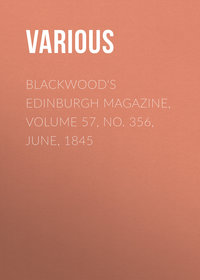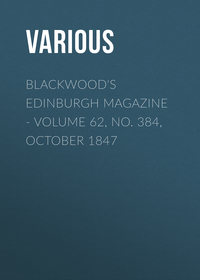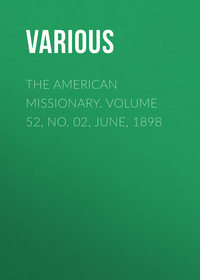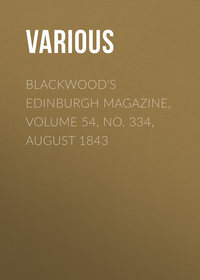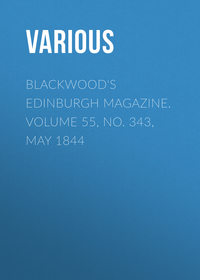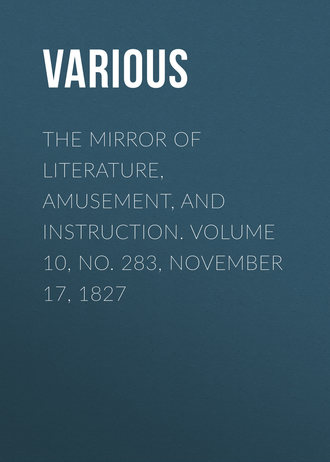 полная версия
полная версияThe Mirror of Literature, Amusement, and Instruction. Volume 10, No. 283, November 17, 1827

Various
The Mirror of Literature, Amusement, and Instruction / Volume 10, No. 283, November 17, 1827
HADDON HALL
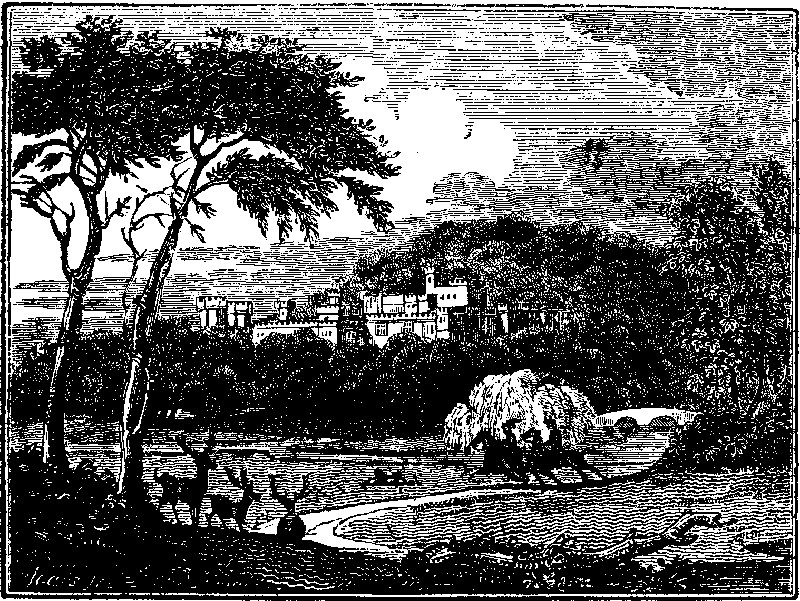
The locomotive facility with which the aid of our graphic department enables us to transport our readers, (for we have already sent them to Sydney,) is somewhat singular, not to say ludicrous; and would baffle the wand of Trismegistus, or the cap of Fortunatus himself. Thus, during the last six weeks we have journeyed from the Palace at Stockholm (No. 277) to that of Buckingham, in St. James's Park, (278;) thence to Brambletye, in the wilds of Sussex, (279;) to Hamlet's Garden at Elsineur, (280;) then to the deserts of Africa, and Canterbury, (281;) in our last, (282,) we introduced our readers to the palatial splendour of the Regent's Park; and our present visit is to Haddon Hall, in Derbyshire, one of the palaces of olden time, whose stupendous towers present a strong contrast with the puny palace-building of later days, and the picturesque beauty of whose domain pleasingly alternates with the verdant pride of the Regent's Park.
Haddon is situate about one mile south-east of Bakewell, and is one of the most curious and perfect of the old castellated mansions of this country. It stands on a gentle hill, in the midst of thick woods overhanging the Wye, which winds along the valley at a great depth beneath. The house consists of two courts; in the centre building behind which is the great hall, with its butteries and cellars. Over the door of the great porch, leading to the hall, are two coats of arms cut in stone; the one is those of Vernon, the other of Fulco de Pembridge, lord of Tong, in Shropshire, whose daughter and heir married Sir Richard Vernon, and brought him a great estate. In one corner of the hall is a staircase, formed of large blocks of stone, leading to the gallery, about 110 feet in length and 17 in width, the floor of which is said to have been laid with boards cut out of one oak, which grew in the park. In different windows are the arms of England in the garter, surmounted with a crown; and those of Rutland impaling Vernon with its quarterings in the garter; and these of Shrewsbury. In the east window of the Chanel adjoining were portraits of many of the Vernon family, but a few years ago the heads were stolen from them. A date of Mi esimo ccccxxvii. is legible. In the north window the name Edwardus Vernon and his arms remain; and in a south window is Willmus Trussel. In the chapel also stands a Roman altar, dug up near Bakewell.
All the rooms (except the gallery) were hung with loose arras, a great part of which still remains; and the doors were concealed every where behind the hangings, so that the tapestry was to be lifted up to pass in or out. The doors being thus concealed, are of ill-fashioned workmanship; and wooden bolts, rude bars, &c. are their only fastenings. Indeed, most of the rooms are dark and uncomfortable; yet this place was for ages the seat of magnificence and hospitality. It was at length quitted by its owners, the Dukes of Rutland, for the more splendid castle of Belvoir, in Lincolnshire.
For many generations Haddon was the seat of the Vernons, of whom Sir George, the last heir male, who lived in the time of queen Elizabeth, gained the title of king of the Peak, by his generosity and noble manner of living. His second daughter and heir married John Manners, second son of the first Earl of Rutland, which title descended to their posterity in 1641. For upwards of one hundred years after the marriage, this was the principal residence of the family; and so lately as the time of the first Duke of Rutland, (so created by queen Anne,) seven score servants were maintained, and during twelve days after Christmas, the house was "kept open."
A few years before the death of Mrs. Radcliffe, the writer of "The Mysteries of Udolpho," and several other romances, a tourist, in noticing Haddon Hall, (and probably supposing that Mrs. R. had killed heroes enough in her time,) asserted that it was there that Mrs. R. acquired her taste for castle and romance, and proceeded to lament that she had, for many years, fallen into a state of insanity, and was under confinement in Derbyshire. Nor was the above traveller unsupported in her statement, and some sympathizing poet apostrophized Mrs. R. in an "Ode to Terror." But the fair romance-writer smiled at their pity, and had good sense enough to refrain from writing in the newspapers that she was not insane. The whole was a fiction, (no new trick for a fireside tourist,) for Mrs. Radcliffe had never seen Haddon Hall.
In the "Bijou" for 1828, an elegant annual, on the plan of the German pocket-books, (to which we are indebted for the present engraving,) are a few stanzas to Haddon Hall, which merit a place in a future number of the MIRROR.
POETICAL LOVE-LETTER
(For the Mirror.)The sweeper of New Haven College, in New England, lately becoming a widower, conceived a violent passion for the relict of his deceased Cambridge brother, which he expressed in the following strain:—
Mistress A—y.To you I fly,You only can relieve me;To you I turn,For you I burn,If you will but believe me.Then, gentle dame,Admit my flame,And grant me my petition:If you deny,Alas! I dieIn pitiful condition.Before the newsOf your poor spouseHad reached our New Haven,My dear wife died,Who was my bride,In anno eighty-seven.Then being free,Let's both agreeTo join our hands—for I doBoldly averA widowerIs fittest for a widow.You may be sure'Tis not your dow'rI make this flowing version;In those smooth laysI only praiseThe glories of your person.For the whole thatWas left to Mat,Fortune to me has grantedIn equal store,Nay, I have more.What Mathew always wanted.No teeth, 'tis true,You have to shew;The young think teeth inviting—But, silly youths,I love those mouthsWhere there's no fear of biting.A leaky eye,That's never dry,These woeful times is fitting;A wrinkled faceAdds solemn graceTo folks devout at meeting.A furrow'd brow,Where corn might grow,Such fertile soil is seen in't,A long hook nose,Though scorn'd by foes,For spectacles convenient.Thus to go on,I could pen downYour charms from head to foot—Set all your gloryIn verse before you,But I've no mind to do't.Then haste away,And make no stay,For soon as you come hitherWe'll eat and sleep,Make beds and sweep,And talk and smoke together.But if, my dear,I must come there,Tow'rd Cambridge strait I'll set me,To touze the hayOn which you lay,If, madam, you will let me.B.EARLY RISING
(For the Mirror.)"Whose morning, like the spirit of a youth,That means to be of note, begins betimes."SHAKSPEARE'S Ant. and Cleop.It is asserted by a tragic poet, "est nemo miser nisi comparatus;" which, by substituting one single word, is exactly applicable to our present subject; "est nemo serus nisi comparatus." All early rising is relative; what is early to one, is late to another, and vice versâ. "The hours of the day and night," says Steele, (Spec. No. 454.) "are taken up in the Cities of London and Westminster, by people as different from each other as those who are born in different countries. Men of six o'clock give way to those of nine, they of nine to the generation of twelve; and they of twelve disappear, and make room for the fashionable world, who have made two o'clock the noon of the day." Now since, of these people, they who rise at six pique themselves on their early rising, in reference to those who rise at nine; and they, in their turn, on theirs, in reference to those who rise at twelve; since, like Homer's generations, they "successive rise," and early rising is, therefore, as I said, a phrase only intelligible by comparison, we must (as theologians and politicians ought oftener to do) set out by a definition of terms. What is early rising? Is it to rise
"What time the shepherd, blowing of his nails,Can neither call it perfect day nor night?""Patience!" I think I hear some of my fair readers exclaim, "Is this the early rising this new correspondent of the MIRROR means to enforce? Drag us from our beds at peep of day! The visionary barbarian! Why, ferocious as our Innovator is, he would just as soon drag a tigress from her's! We will not obey this self-appointed Dictator!" Stay, gentle ladies; in the first place I am not going to enforce this or any other hour; in the second place, I am not going to enforce early rising at all.—Convinced you feel, with me, the importance of time, and your responsibility for its right improvement, I leave it to your consciences whether any part of it should be uselessly squandered in your beds. The moral culpability of late rising is when it interferes with the necessary duties of the day; and though, my fair readers, you may in a great measure claim exemption from these, I would still, simply in reference to your health and complexions, advise you not to exceed seven o'clock. But, to effect this, a sine quâ non is, retiring early, say at eleven—(though really I am too liberal.—When people were compelled to retire at the sound of the curfew, when
"The curfew toll'd the parting knell of day,"early rising was a necessary consequence, as they were earlier tired of their beds; and this may account for the singular difference between ancient and modern times in this respect; so that late rising, though a modern refinement, is by no means exclusively attributable to modern luxury and indolence, but partly to a change of political enactments, (you see, ladies, I am giving you every chance.)
In the man of business, late rising is perfectly detestable; but to him, instead of the arguments of health and moral responsibility for time, (or rather in addition to these arguments,) I would urge the argumentum ad crumenam; which is so pithily, however homelily, expressed in these two proverbs, which he cannot be reminded of once too often:
"Early to bed, and early to rise,Will make a man healthy, wealthy, and wise.""There are no gains without pains;Then plough deep, while sluggards sleep."And a third proverb is a compendium of my advice to both classes of readers:
"He who will thrive must rise at five;He who has thriven may sleep till seven."So then we have defined what early rising is; seven, to those who have nothing to do,—as soon as ever business calls, to those who have. Was ever bed of sloth more eloquently reprobated than in the following lines from the Seasons?
"Falsely luxurious will not man awake,And, springing from the bed of sloth, enjoyThe cool, the fragrant, and the silent hour,To meditation due and sacred song?For is there aught in sleep can charm the wise?To lie in dead oblivion, losing halfThe fleeting moments of too short a life,Total extinction of th' enlighten'd soul!Or else, to feverish vanity alive,Wilder'd and tossing through distemper'd dreams?Who would in such a gloomy state remainLonger than nature craves, when every MuseAnd every blooming pleasure wait without,To bless the wildly devious morning walk?"Exquisite indeed! But this too is a proof how nearly the sublime and ridiculous are associated,—"how thin partitions do their bounds divide;" for this fine poetry is associated, in most reader's minds, with Thomson's own odd indulgence in the "dead oblivion." He was a late riser, sleeping often till noon; and when once reproached for his sluggishness, observed, that "he felt so comfortable he really saw no motive for rising." As if, according to the popular version of the story, "I am convinced, in theory, of the advantage of early rising. Who knows it not, but what can Cato do?" "Ay, he's a good divine, you say, who follows his own teaching; don't talk to us of early rising after this." Why not, unless like Thomson, you're kept up till a very late hour by business? The fact is he did not
—"In that gloomy state remainLonger than nature craves,"after all. He had a strong apology for not rising early, in the late hours of his lying down. The deep silence of the night was the time he commonly chose for study; and he would often be heard walking in his library, at Richmond, till near morning, humming over what he was to write out and correct the next day, and so, good reader, this is no argument against my position; but observe, retiring late is no excuse for late rising, unless business have detained you: balls and suppers are no apology for habitual late rising. And now, my dearest readers, do you spend the night precisely as Thomson did, and I'll grant you my "letters patent, license, and protection," to sleep till noon every day of your life. You have only to apply to me for it through "our well-beloved" editor of the MIRROR.
W. P–N.BUNHILL FIELDS BURYING-GROUND
This extensive burial-place is part of the manor of Finsbury, or Fensbury, which is of great antiquity, as appears by its being a prebend of St. Paul's Cathedral in 1104. In the year 1315, it was granted by Robert de Baldock to the mayor and commonalty of London. Part of it was, in 1498, converted into a large field for the use of archers and other military citizens to exercise in. This is now called The Artillery Ground.
In the year 1665, that part of the ground now called Bunhill (originally Bonhill) Field, was set apart as a common cemetery, for the interment of such bodies as could not have room in their parochial burial-grounds in that dreadful year of pestilence. However, not being made use of on that occasion, a Mr. Tindal took a lease thereof, and converted it into a burial-place for the use of Dissenters. It was long called Tindal's Burial-place. Over the west gate of it was the following inscription:—"This church-yard was inclosed with a brick wall at the sole charges of the city of London, in the mayoralty of Sir John Lawrence, Knt., Anno Domini 1665; and afterwards the gates thereof were built and finished in the mayoralty of Sir Thomas Bloudworth, Knt., Anno Domini, 1666."
The fen or moor (in this neighbourhood), from whence the name Moorfields, reached from London-wall to Hoxton; the southern part of it, denominated Windmill Hill, began to be raised by above one-thousand cart-loads of human bones, brought from St. Paul's charnel-house in 1549, which being soon after covered with street dirt from the city, the ground became so elevated, that three windmills were erected on it; and the ground on the south side being also much raised, it obtained the name of The Upper Moorfield.
The first monumental inscription in Bunhill-fields is, Grace, daughter of T. Cloudesly, of Leeds. Feb. 1666.—Maitland's Hist. of London, p. 775.
Dr. Goodwin was buried there in 1679; Dr. Owen in 1683; and John Bunyan in 1688.
Park-place, Highbury Vale.J. H. B.SUPPOSED ORIGIN OF MEZZO-TINTO. 1
Mezzo-tinto is said to have been first invented by Prince Rupert, about the year 1649: going out early one morning, during his retirement at Brussels, he observed the sentinel, at some distance from his post, very busy doing something to his piece. The prince asked the soldier what he was about? He replied, the dew had fallen in the night, had made his fusil rusty, and that he was scraping and cleaning it. The prince, looking at it, was struck with something like a figure eaten into the barrel, with innumerable little holes, closed together, like friezed work on gold or silver, part of which the fellow had scraped away. The genie second en experiences (says Lord Orford), from so trifling an accident, conceived mezzo-tinto. The prince concluded, that some contrivance might be found to cover a brass plate with such a ground of fine pressed holes, which would undoubtedly give an impression all black, and that, by scraping away proper parts, the smooth superfices would leave the rest of the paper white. Communicating his idea to Wallerant Vaillant, a painter, they made several experiments, and at last invented a steel roller with projecting points, or teeth, like a file, which effectually produced the black ground; and which, being scraped away or diminished at pleasure, left the gradations of light. Such was the invention of mezzo-tinto, according to Lord Orford, Mr. Evelyn, and Mr. Vertue.
P. T. W.RETROSPECTIVE GLEANINGS
[For the following succinct account of the Gunpowder Conspiracy, our acknowledgments are due to the proprietors of an elegant and interesting Annual, entitled "THE AMULET" for 1828.]
A BRIEF HISTORY OF "THE GUNPOWDER PLOT."
(Compiled from original and unpublished documents.)Of all the plots and conspiracies that ever entered into the mind of man, the Gunpowder plot stands pre-eminent in horror and wickedness.
The singular perseverance of the conspirators is shown by the fact, that so early as in Lent of the year 1603, Robert Catesby, who appears to have been the prime mover of the plot, in a conversation with Thomas Wintour and John Wright, first broke with them about a design for delivering England from her bondage, and to replant the Catholic religion. Wintour expressed himself doubtful whether so grand a scheme could be accomplished, when Catesby informed him that he had projected a plan for that purpose, which was no less than to blow up the Parliament House with gunpowder.
Wintour consented to join in the scheme, and, at the suggestion of Catesby, went over to Flanders to arrange some preliminary affairs there, and to communicate the design to Mr. Fawkes, who was personally known to Catesby. At Ostend, Wintour was introduced to Mr. Fawkes by Sir Wm. Stanley. Guy Fawkes was a man of desperate character. In his person he was tall and athletic, his countenance was manly, and the determined expression of his features was not a little heightened by a profusion of brown hair, and an auburn-coloured beard. He was descended from a respectable family in Yorkshire, and having soon squandered the property he inherited at the decease of his father, his restless spirit associated itself with the discontented and factious of his age. Wintour and Fawkes came over to England together, and shortly after met Catesby, Thomas Percy, and John Wright, in a house behind St. Clement's; where, in a chamber with no other person present, each administered an oath of secresy to the other, and then went into another room to hear mass, and to receive the sacrament. Percy was then sent to hire a house fit for their purpose, and found one belonging to Mr. Whinniard, Yeoman to the King's Wardrobe of the Beds, then in the occupation of one Henry Ferrers; of which, after some negociation, he succeeded in obtaining possession, at the rent of twelve pounds per annum, and the key was delivered to Guy Fawkes, who acted as Mr. Percy's man, and assumed the name of John Johnson. Their object in hiring this house was to obtain an easy communication with the upper Parliament House, and by digging through the wall that separated them, to form an extensive mine under the foundations. A house was also hired in Lambeth, to serve as a depository for the powder, and Mr. Keys, who was then admitted as one of the number, was placed in charge. The whole party then dispersed, and agreed to meet again at Michaelmas. At Michaelmas it was resolved that the time was arrived when they should commence working at their mine; but various causes hindered them from beginning, till within a fortnight of Christmas. The party, at that time, consisting of five, then entered upon their work; and, having first provided themselves with baked meat that they might not have occasion to leave the house, they worked incessantly till Christmas Eve, underpropping the walls, as they proceeded, with wood. A little before Christmas, Christopher Wright was added to the number; and, finding their work to be extremely laborious, the walls being upwards of three yards in thickness, they afterwards admitted Robert Wintour to assist them. Taking advantage of the long and dreary nights between Christmas and Candlemas, they then brought their powder over from Lambeth in a boat and lodged it in Percy's house, and afterwards continued to labour at the mine. In the Easter following (1605) as they were at their work, the whole party were dreadfully alarmed on hearing a rushing noise near them; but on inquiry they found no danger menaced them, but that it proceeded from the removal of some coals in an adjoining vault, under the Parliament House. Nothing could be more propitious for the conspirators; and, ascertaining that it belonged to the same parties of whom they held the house, but in the possession of a man of the name of Skinner, they lost no time in purchasing the good-will of Skinner, and eventually hired the vault of Whinniard, at the rate of four pounds per annum. Abandoning their original intention of forming a mine under the walls, they placed the powder in this vault, and afterwards gradually conveyed into it three thousand billets of wood, and five hundred fagots; Guy Fawkes arranging them in order, making the place clean and neat, in order that if any strangers, by accident or otherwise, entered the house, no suspicion might be excited. Fawkes then went into Flanders to inform Sir W. Stanley and Mr. Owen of their progress, and returned in the following August. Catesby, meeting Percy at Bath, proposed that himself should have authority to call in whom he pleased, as at that time they were but few in number, and were very short of money. This being acceded to, he imparted the design to Sir Everard Digby, Francis Tresam, Ambrose Rookewood, and John Grant. Digby promised to subscribe one thousand five hundred pounds, and Tresam two thousand pounds. Percy engaged to procure all he could of the Duke of Northumberland's rents, which would amount to about four thousand pounds, and to furnish ten good horses.
Thus far, every thing had prospered with the conspirators; success had followed every effort they had made.
On Thursday evening, the 24th of October, eleven days before the intended meeting of Parliament, an anonymous letter was put into the hands of the servant of Lord Monteagle, warning his Lordship not to attend the Parliament that season, for that God and man had concurred to punish the wickedness of the times. It is a most extraordinary fact, that the conspirators knew of the delivery of this letter to the Lord Monteagle, and that it was in the possession of the Earl of Salisbury, Secretary of State, for eight days before the disclosure took place, as developed in Thomas Wintour's confession, taken before the Lord's Commissioners on the 23rd of November, 1605; yet so strong was their infatuation, and so desperately had they set their fortunes on the event, that they unanimously resolved "to abyde the uttermost tryall."
The generally received opinion has been, that it was to the sagacity and penetration of King James that the detection of the conspiracy must be ascribed, and that it was his Majesty who first suggested the agency of gunpowder: but the Earl of Salisbury, in a letter to Sir Charles Cornwallis, ambassador at Madrid, asserts, that in a conversation between the Earl of Suffolk (Lord Chamberlain) and himself, on perusal of the anonymous letter, the employment of gunpowder first occurred to them, and that the King subsequently concurred in their opinion. The letter, after having been communicated to several of the Privy Council, was shewn to the King three or four days before the opening of Parliament, who, with great prudence, gave orders that no notice whatever should be taken of it, but that every thing should go on as usual, until the very day appointed. On Saturday, the Lord Chamberlain, according to the customary forms of his office previous to the meeting of every Parliament, viewed every room and cellar belonging to the Parliament House, and amongst others the identical vault in which the wood and powder was deposited, and observed a man, who subsequently proved to be Guy Fawkes, standing there to answer any questions that might have been asked. The Lord Chamberlain then went to the Privy Council and reported what he had seen. After much discussion it was resolved that a more minute search should be made, under pretence of seeking for stolen goods, in order that no suspicion might arise if nothing should be discovered. Accordingly, on Monday at midnight, Sir T. Knyvett, accompanied by a small band of men, went to Percy's house, where, at the door, they found Guy Fawkes with his clothes and boots on. Sir Thomas immediately apprehended him, and then proceeded to search the house and vault, and upon removing some of the wood, they soon discovered the powder ready prepared for the explosion; then, directly afterwards, searching Guy Fawkes, they found on him three matches and other instruments for setting fire to the train. He confessed himself guilty, and boldly declared, that if he had happened to have been within the house when Sir T. Knyvett apprehended him, he would instantly have blown him up, house and all.




